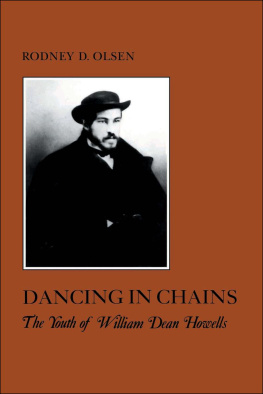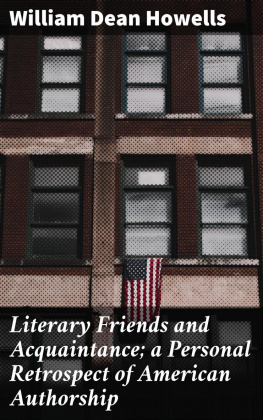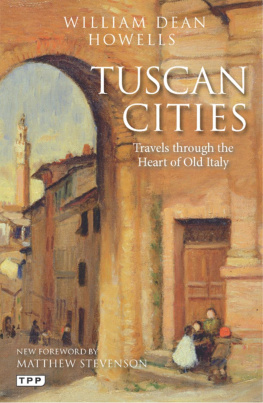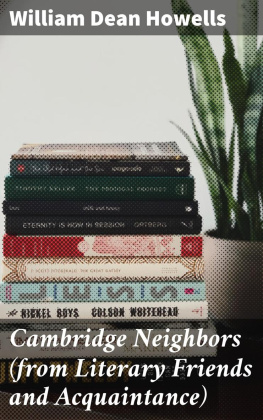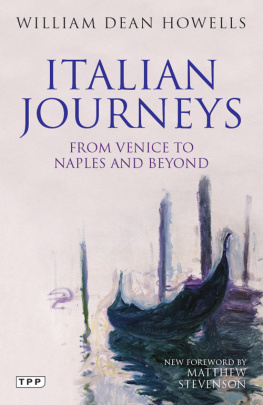DANCING IN CHAINS
The American Social Experience Series
GENERAL EDITOR: JAMES KIRBY MARTIN
EDITORS: PAULA S. FASS, STEVEN H. MINTZ,
CARL PRINCE, JAMES W. REED & PETER N. STEARNS
1. The March to the Sea and Beyond: Shermans Troops in the Savannah and Carolinas Campaigns
JOSEPH T. GLATTHAAR
2. Childbearing in American Society: 1650-1850
CATHERINE M. SCHOLTEN
3. The Origins of Behaviorism: American Psychology, 1870-1920
JOHN M. ODONNELL
4. New York City Cartmen, 1667-1850
GRAHAM RUSSELL HODGES
5. From Equal Suffrage to Equal Rights: Alice Paul and the National Womans Party, 1910-1928
CHRISTINE A. LUNARDINI
6. Mr. Jeffersons Army: Political and Social Reform
of the Military Establishment, 1801-1809
THEODORE J. CRACKEL
7. A Peculiar People: Slave Religion and
CommunityCulture Among the Gullahs
MARGARET WASHINGTON CREEL
8. A Mixed Multitude: The Struggle for Toleration
in Colonial Pennsylvania
SALLY SCHWARTZ
9. Women, Work, and Fertility, 1900-1986
SUSAN HOUSEHOLDER VAN HORN
10. Liberty, Virtue, and Progress: Northerners and
Their War for the Union
EARL J. HESS
11. Lewis M. Term an: Pioneer in Psychological Testing
HENRY L. MINTON
12. Schools as Sorters: Lewis M. Terman, Applied Psychology, and the Intelligence Testing Movement, 1890-1930
PAUL DAVIS CHAPMAN
13. Free Love: Marriage and Middle-Class Radicalism
in America 1825-1860
JOHN C. SPURLOCK
14. Jealousy: The Evolution of an Emotion in American History
PETER N. STEARNS
15. The Nurturing Neighborhood: The Brownsville Boys Club and
Jewish Community in Urban America, 1940-1990
GERALD SORIN
16. War in America to 1775: Before Yankee Doodle
JOHN MORGAN DEDERER
17. An American Vision: Far Western Landscape and
National Culture, 1820-1920
ANNE FARRAR HYDE
18. Frederick Law Olmsted: The Passion of a Public Artist
MELVIN KALFUS
19. Origins of American Medical Malpractice, 1790-1900
KENNETH ALLEN DE VILLE
20. Dancing in Chains: The Youth of William Dean Howells
RODNEY D. OLSEN
DANCING IN CHAINS
The Youth of William Dean Howells
RODNEY D. OLSEN
Copyright 1991 by New York University
All rights reserved
Manufactured in the United States of America
Library of Congress Cataloging-in-Publication Data
Olsen, Rodney D.
Dancing in chains : the youth of William Dean Howells / Rodney D.
Olsen.
p. cm.(The American social experience series; 20)
Includes bibliographical references and index.
ISBN 0-8147-6172-0
1. Howells, William Dean, 1837-1920BiographyYouth.
2. Novelists, American19th centuryBiographyYouth. 3. United
StatesSocial life and customs1783-1865. 4. CriticsUnited
StatesBiography. 5. OhioSocial life and customs. I. Title.
II. Series.
PS2033.047 1990
818.409dc20
[B] 90-37916
CIP
New York University Press books are printed on acid-free paper,
and their binding materials are chosen for strength and durability.
For my father and mother,
W. Donald Olsen and Glenda Aamodt Olsen
If He could doubt on His triumphant cross,
How much more I, in the defeat and loss
Of seeing all my selfish dreams fulfilled,
Of having lived the very life I willed,
Of being all that I desired to be?
My God, my God! Why hast thou forsaken me?
WILLIAM DEAN HOWELLS , 1894
Contents
Illustrations
Preface
William Dean Howells was the premier novelist of the nineteenth-century American middle class. He was a domestic novelist, master of the urban parlor scene, the setting reserved for tasteful display of affluence and elegant presentation of self. To outward appearances, Howells enjoyed a life of success and prosperity. Yet many of his novelistic characters lack the sense of security his middle-class readers associated with their parlors. Often Howellss characters do not feel at home.
Although literary historians have significantly revised Howellss reputation as comforter of the middle class, the persistence of this image has prevented the fullest biographical and historical inquiry into the meaning of his life and career.vocational aspirations, gender ideals, ideological experimentation, political commitment, moral belief, and spiritual doubt.
As a successful novelist and prominent social critic, Howells was not a typical nineteenth-century American in any simple sense, but he shared in experiences common to many families. In the years before the Civil War, middle-class Americans sanctified domestic scenes in an outpouring of lithographic prints and popular songs. Howellss uneasy characters express an emotion that had become prevalent by mid-century. An intense longing for a stable connection to home arose during the economic and social transformation that created the nineteenth-century middle class. With increasing momentum after the War of 1812, the formation of an integrated national market brought dramatic changes in traditional patterns of communal life, particularly in the North. As communal life began to erode, home acquired its deep, resonant appeal.
In the years before the Civil War, becoming middle class rather than being middle class was the experience of most Americans. Along with many other families, the Howells family struggled to accommodate the new with the old. While revering traditional values, they assimilated the emergent middle-class ethos of civilized morality with its ideals of self-control and individual success. Howellss early writingshis diaries, poetry, fiction, newspaper columns, and family letterspresent a detailed self-portrait of childhood and youth, stages of life that were newly realized and rationalized to accord with the transformation of everyday life. The tensions of Howellss life and work, like those of many of his contemporaries, were rooted in this transitional period.
While I elaborate the personal meanings of Howellss words and actions, I pay particular attention to the public dimensions of his development. My primary psychological premises are drawn from Erik Eriksons conception of the identity crisis of youth with its precursors in childhood. An individuals identity, in Eriksons view, is formed from a complex interplay of personal, social, and cultural forces.
For Howells and for countless antebellum youth, home leaving was a momentous time of life. Aspiring middle-class Americans could no longer view the family as a little commonwealth, a relatively self-sufficient entity that prescribed the limits of individual desire and expectation. To accommodate the emergent order, they made the family a place for strenuous beginnings, where children absorbed the values and developed the talents that prepared them for accomplishments in the outer world. For middle-class Americans, home leaving became a necessary tribulation, a hazardous rite of passage. They expected youth to face fearful tests and temptations. They warned of fateful decisions. Howellss home-leaving difficulties were compounded by his struggle for a literary vocation and complicated by a powerful family claim. Unless he believed the literary vocation offered the greatest possible usefulness to others, he could not escape terrible feelings of selfishness. Howellss distress over his selfish aim to succeed in literature was severe and enervating. But it represented an extreme instance of vocational anxieties that affected many nineteenth-century Americans who were troubled by ambition.

